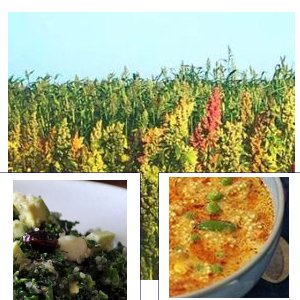Quinoa
The Inca Superfood..
…very trendy, popular & easy to grow !
Like Maize (sweetcorn) quinoa is one of the most productive plants you can grow on any allotment.
If you want to know how to grow quinoa (and why) then a key advantage is that you can not only use the seeds like a high-protein grain (with a great taste) but you can also eat the leaves, like a type of spinach.
What is Quinoa ?
The quinoa plant originates from the high Andes mountains in Bolivia, and later Peru.
It was the staple diet of the Inca because it is both healthy & easy to grow, and used to be called the ‘golden crop’. It used to grow at very high altitudes (although it will just as easily grow on an allotment in London, Glasgow, etc) – is very hardy and doesn’t need very good soil. The plants have a variety of colours, look great and can grow up to 3 meters in height !
The United Nations year of the quinoa..
Last year (2013) was the international year of the quinoa because it’s such an important crop for helping prevent hunger. Or to quote the FAO :
“Like the potato, quinoa was one of the main foods of the Andean peoples before the Incas. Traditionally, quinoa grain are roasted and then made to flour, with which different types of breads are baked. It can also be cooked, added to soups, used as a cereal, made into pasta and even fermented to beer or chicha, the traditional drink of the Andes. When cooked it takes on a nut-like flavor. “
15 types of quinoa
Not surprising (for a crop that has been grown for over 5000 years) there are a number of different varieties of quinoa.
The advantages of quinoa is that it is very healthy, gluten free (ideal if you are intolerant) and contains essential vitamins and minerals. Try to avoid strains like Ayacuchana and Pasankalla as they can cause a reaction if you have Celiac disease. (but you are unlikely to find the seeds available in the UK in any case).
How to grow Quinoa…..
The plants will grow virtually anywhere and are extremely easy to grow.
A key advantage in how to grow quinoa is that you can either grow them straight outside – or it’s easier to start them inside (in small pots, similar to tomatoes) and then replant them outside. The advantage of doing it that way is simply because it’s easier to keep them apart from weeds !
If you sow the seeds outside scatter them over well-raked soil in a sunny part of the allotment (or garden) 30 cm apart – then simply water & watch them grow !
The plants will flower in July / August – with great looking different coloured flowers
Pests..
Don’t worry !!
For insects, rodents and birds the seeds taste very bitter and they simply won’t touch them (for more details of how to prepare them for cooking see below)
Watering..
The plants are hardy, but do water them ‘now & then’ during a dry spell. (taking care not to over water)
Harvesting..
2 crops for the price of 1
There are 2 elements to the Quinoa you can harvest and use.
1. Quinoa Leaves..
They only taste great when they are ‘young & fresh’ i.e. harvest them early in the season as the plants are growing and simply used them in the same way as baby spinach leaves (steam them or add them to a salad)
2. The Quinoa Seeds
In early autumn (September/October) they will be ready to harvest when the leaves start dropping off and the flower heads start changing colour. You will know when they are ready if a few seeds come out easily when you rub them. Don’t leave them to long when they are ready as they will start sprouting again.
Simply cut of the pods with seeds (with secateurs) and leave them to dry, somewhere cool, for about a week. And then simply ‘shake or rub’ loose the seeds (do wear gloves)
Then simply tips the seeds (outside on a breeze day) from one bowl to another to get rid of the chaff. Maybe trying to copy some of the dance moves at the same time…
Now you know how to grow quinoa then the grain is nowready to use or store.
More information


